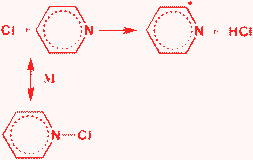Kinetics, mechanism, and thermochemistry of the gas-phase reaction of atomic chlorine with pyridine
Abstract
A laser flash photolysis-resonance fluorescence technique has been employed to study the kinetics of the reaction of atomic chlorine with

* Corresponding authors
a School of Earth & Atmospheric Sciences, Georgia Institute of Technology, Atlanta, USA
b School of Chemistry & Biochemistry, Georgia Institute of Technology, Atlanta, USA
c Department of Chemistry & Biochemistry, Auburn University, USA
A laser flash photolysis-resonance fluorescence technique has been employed to study the kinetics of the reaction of atomic chlorine with

 Please wait while we load your content...
Something went wrong. Try again?
Please wait while we load your content...
Something went wrong. Try again?
Z. Zhao, D. T. Huskey, K. J. Olsen, J. M. Nicovich, M. L. McKee and P. H. Wine, Phys. Chem. Chem. Phys., 2007, 9, 4383 DOI: 10.1039/B707017A
To request permission to reproduce material from this article, please go to the Copyright Clearance Center request page.
If you are an author contributing to an RSC publication, you do not need to request permission provided correct acknowledgement is given.
If you are the author of this article, you do not need to request permission to reproduce figures and diagrams provided correct acknowledgement is given. If you want to reproduce the whole article in a third-party publication (excluding your thesis/dissertation for which permission is not required) please go to the Copyright Clearance Center request page.
Read more about how to correctly acknowledge RSC content.
 Fetching data from CrossRef.
Fetching data from CrossRef.
This may take some time to load.
Loading related content
